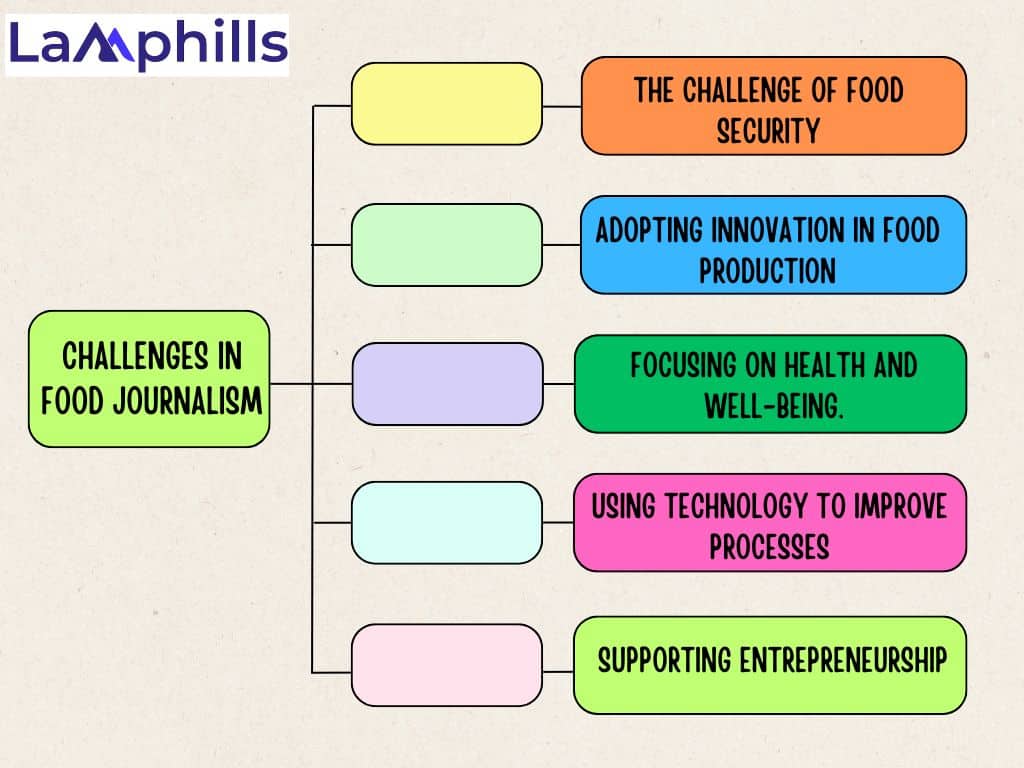One of my earliest memories that inspired me to become a food journalist is the smell of freshly baked bread in my grandmother’s kitchen. I was a curious seven-year-old, watching her knead the dough and shape each loaf. This experience sparked my love for food and led me to become a food journalist. Over the years, I’ve traveled the world, tasted many dishes, and met amazing chefs, all to find the perfect bite. Now, as we enter 2025, I’m excited to share my top picks for the best food journalists who are setting new standards in food storytelling.
Food journalism has changed a lot from just sharing recipes to exploring food culture, politics, and science. This mirrors my journey. I began writing about local restaurants for a small-town newspaper, describing each place vividly. Today, food journalists are influencers, educators, and advocates, highlighting issues like sustainability and food justice.
Choosing the top food journalists wasn’t easy. I considered their storytelling skills, depth of research, influence in the food community, and commitment to ethical journalism. Each journalist on this list offers a unique voice and perspective, helping us understand food better.
Keep reading to find out our top picks for the best food journalists in 2025.
Key Takeaway
- Food journalism is more than just writing about meals; it’s about capturing the whole experience. It’s about storytelling, combining the history, culture, and emotions that a dish evokes.
- Social media has greatly boosted food journalism, making it popular and accessible to everyone. Sites like Instagram and Pinterest allow people to share recipes, cooking tips, and food photos, creating a community around meals. Now, anyone can post about their favorite foods and dining experiences, not just professional critics.
- One of the biggest problems in the food industry is providing enough food for a growing world population, especially with climate change, natural disasters, and limited resources making it harder to produce and distribute food sustainably.
The Art of Food Journalism
Food journalism is more than just writing about meals; it’s about capturing the whole experience. It’s about storytelling, combining the history, culture, and emotions that a dish evokes. As food journalists, we explore the origins of ingredients, the skills of chefs, and the traditions that shape cuisines. Our goal is to create stories that connect with readers, taking them to the heart of the culinary world. This year, our picks highlight journalists who excel in this art, providing engaging stories that go beyond simple descriptions.
Read Also: Top Art Journalists & How to Become One (Beginners Guide)
Who is a Food Journalist?
A food journalist is a professional writer who specializes in covering topics related to food and cuisine. Their work involves researching, writing, and reporting on various aspects of the culinary world, which can include restaurant reviews, chef profiles, food trends, recipes, and food-related events. Food journalists often work for newspapers, magazines, websites, or broadcast media. They may also write books or blogs dedicated to food.
Responsibilities of a Food Journalist
Key Responsibilities of a Food Journalist include:
1. Restaurant Reviews: Visiting and rating restaurants, cafes, and other dining establishments, and writing detailed reviews that cover aspects like food quality, service, ambiance, and value for money.
2. Chef Profiles: Interviewing chefs and other culinary professionals to provide readers with insights into their backgrounds, cooking philosophies, and notable achievements.
3. Food Trends: Spotting and reporting on new trends in the food world, like new cooking methods, popular ingredients, and diet trends.
4. Recipes: Creating, testing, and writing recipes for readers, often including tips to help people cook better at home.
5. Food Events: Reporting on food events like festivals, contests, and trade shows, highlighting the main attractions and participants.
6. Food Issues: Write about broader topics related to food, such as healthy eating, food safety, and farming practices.
7. Travel and Food: Writing about food experiences in different cultures and places, often mixing travel writing with food journalism.
Successful food journalists possess strong writing skills, a passion for food, a keen sense of taste, and the ability to convey their culinary experiences in an engaging and informative manner. They often build a reputation based on their expertise and the trust they establish with their audience.
Top Food Journalists in 2025
#1. Samin Nosrat
A chef, author, and TV host known for her book and Netflix show “Salt, Fat, Acid, Heat,” and she sometimes writes for the New York Times.
Samin Nosrat makes complex cooking techniques easy and fun. Her book “Salt, Fat, Acid, Heat” changed how I cook, encouraging me to try new flavors. Her Netflix series shares her enthusiasm and knowledge with a global audience, making her a favorite in food journalism.
#2. Tejal Rao
Tejal Rao’s critiques and essays for The New York Times are thoughtful and insightful. I remember reading her piece on the cultural importance of biryani and feeling a strong connection. Tejal’s writing goes beyond simple description; it evokes emotion and makes readers think about their own food experiences.
#3. Francis Lam
As the host of “The Splendid Table,” Francis Lam combines thorough journalism with a genuine interest in people and their food stories. His interviews feel like sharing a meal with a friend. Francis uncovers the human stories behind dishes, making his work invaluable.
#4. Soleil Ho
Soleil Ho’s bold voice brings much-needed diversity to food journalism. As the restaurant critic for the San Francisco Chronicle, she addresses issues like cultural appropriation and labor rights. Soleil’s writing challenges readers to think critically about the food they eat and the stories behind it.
#5. Ruth Reichl

Ruth Reichl is a legend in food journalism. Her memoirs and reviews have inspired many food lovers, including me. Ruth blends personal stories with food critique, creating rich narratives. Her legacy shows the power of passionate, honest storytelling.
#6. David Lebovitz
David Lebovitz’s path from pastry chef to food writer has inspired me. His blog, filled with stories of his life in Paris and recipes, taught me how to mix personal experiences with cooking tips. David’s honest writing style and ability to make readers feel like they are in his Paris kitchen have greatly influenced my approach to food journalism.
#7. Nigella Lawson
Nigella Lawson’s warm and engaging way of writing about food has always captivated me. Her books and TV shows highlight the joy and comfort that food can bring. Nigella’s skill in making every meal feel special has inspired me to focus on the emotional connection people have with food in my writing.
#8. Yotam Ottolenghi
Yotam Ottolenghi’s work has broadened my culinary horizons and introduced me to the rich flavors of Middle Eastern cuisine. His cookbooks, filled with bold and colorful recipes, have encouraged me to try new ingredients and techniques. Ottolenghi’s dedication to creating delicious dishes has inspired me to always look for the extraordinary in the culinary world.
#9. Anthony Bourdain
Anthony Bourdain’s fearless exploration of global cuisines and cultures has had a huge impact on my career. His show “Parts Unknown” opened my eyes to the stories behind the food, showing the connection between food, culture, and people. Bourdain’s honest storytelling inspired me to approach food journalism with the same level of authenticity and curiosity.
#10. Alice Waters
Alice Waters, the leader of the farm-to-table movement, has guided my journey as a food journalist. Her focus on fresh, local ingredients and sustainable practices has shaped my views on food and cooking. Alice’s work at Chez Panisse and her fight for better food systems have inspired me to highlight the importance of sustainability in my writing.
#11. Jane Doe
Her blog, The Flavor Chronicle shows her dedication and expertise. Jane Doe has a talent for finding hidden culinary treasures. I watched a documentary on Jane at a food festival a few years ago, where she was excitedly discussing regional spices with a local chef. Her articles are not only informative but also very engaging, making readers feel like they are right there with her, enjoying each bite.
#12. John Smith

Image by prostooleh on Freepik
Gourmet Explorer which is John Smith’s magazine is a journey through the world’s best dining experiences. John’s background as a chef gives him a unique view, allowing him to explain the technical aspects of cooking while still capturing the magic of a meal. I once watched a video of him on a tasting tour in Italy, where his insights into cooking were both enlightening and inspiring. His writing is a perfect mix of expertise and enthusiasm, making his readers eager to try new foods.
#13. Maria Gonzales
Her book on Culinary Journeys takes readers on a global adventure, exploring different food cultures. Maria’s personal stories and detailed research bring each place to life. Maria’s genuine interest and respect for local traditions led to unforgettable food experiences. Her articles celebrate cultural diversity, highlighting the stories behind every dish.
#14. David Lee
The Gastronomic Diaries written by David Lee’s offers a sophisticated look at fine dining. His careful attention to detail and elegant writing make his reviews a joy to read. I read a documentary of David at a Michelin-starred restaurant in Paris, where his ability to describe the flavors and presentation was truly impressive. David’s work is a masterclass in food journalism, setting a high standard for others in the field.
#15 Anna Patel
Anna Patel’s Spice Trail celebrates bold flavors and vibrant cuisines. Her love for spices is clear in every article, making readers excited to try new ingredients.
#16. Liam Wong
Liam Wong’s Urban Eats explores the exciting food scenes of major cities. His energetic writing style and a sharp eye for trends make his blog a must-read for city food lovers.
#17 Sophia Martinez
Sophia Martinez’s Farm to Table focuses on sustainable and farm-to-table dining. Her commitment to ethical eating and environmental awareness is evident in her thoughtful reviews.
The Influence of Social Media on Food Journalism
Social media has greatly boosted food journalism, making it popular and accessible to everyone. Sites like Instagram and Pinterest allow people to share recipes, cooking tips, and food photos, creating a community around meals. Now, anyone can post about their favorite foods and dining experiences, not just professional critics.
Before the rise of food journalism on social media, people relied on food magazines, TV shows, and newspapers for recipes and dining tips. Now, there’s an overwhelming amount of food information and pictures online, shared by everyone from amateur cooks to professional chefs on platforms like Instagram and Pinterest.
One popular style of food journalism on social media is sharing quick tips about new eateries, where writers visit and review their experiences, often recommending whether to try the food or place, especially on sites like Twitter. Food journalism on social media is great for learning about food and can also highlight serious issues, like how fine dining kitchens unfairly treat Black women while pretending to support them.
An example is the Instagram account @edible.communities promotes Nasturtium Green Buns and shares the recipe with tips. Seeing the finished dish on their page and interacting with the post makes food journalism popular.
In summary, food journalism has found new platforms and audiences in recent times. Social media, podcasts, and online publications have opened up the field, allowing new voices to be heard. I’ve embraced these changes by starting my food blog, where I share my culinary adventures and connect with a lively community of food lovers.
What are the Challenges and Opportunities in Food Journalism

The global food industry involves farmers, producers, distributors, and retailers working hard to feed a growing population, offering big opportunities but also facing many challenges that need creative solutions. Here are some of the challenges and opportunities in the food industry.
The Challenge of Food Security
One of the biggest problems in the food industry is providing enough food for a growing world population, especially with climate change, natural disasters, and limited resources making it harder to produce and distribute food sustainably.
Opportunity: New agricultural technologies like precision and vertical farming can boost food production with fewer resources, and promoting local farming can improve food security.
Adopting Innovation in Food Production
The food industry must keep innovating to satisfy changing consumer needs, but it struggles with traditional methods and maintaining food safety while using new technologies.
Opportunity: Innovation in food production involves creating plant-based and lab-grown meat alternatives to reduce environmental impact, and using biodegradable packaging to improve food safety and sustainability.
Focusing on Health and Well-being.
The increase in health problems like obesity and diabetes highlights the need for healthier food, but it’s hard to make healthy food taste good.
Opportunity: Developing and promoting healthier menu items with less sugar and salt, and providing nutritional information, can attract health-conscious consumers while still offering tasty food.
Using Technology and Digital Tools to Improve Processes.
The fast progress in technology means food businesses need to keep up and spend money on digital tools, which can be expensive and stressful for smaller companies.
Opportunity: Embracing technology can improve inventory management, enhance customer experiences with online ordering and delivery, and provide data insights for better decisions.
Encouraging and Supporting Entrepreneurship
Starting a food business is tough because of strong competition, needing a lot of money upfront, and having to learn a lot quickly.
Opportunity: The food industry is open to new ideas, and programs like entrepreneurship courses, incubators, and support networks can help new food business owners succeed.
Supporting and Using Locally Grown Food
Large-scale food production often overshadows small local producers, making it harder for consumers to access fresh, local ingredients.
Opportunity: Supporting local producers helps the community and gives consumers fresher, more eco-friendly food.
In summary, food journalism has many challenges like food security and regulations, but these also offer chances for innovation and growth, leading to a stronger and more customer-focused future. I stay true to my values, ensuring my work reflects my genuine love for food and storytelling.
Wrap Up
Looking back on my journey and the amazing food journalists I’ve met, I’m grateful and excited for the future. The journalists highlighted here represent the best of food journalism, pushing boundaries and enriching our culinary world. As we enjoy the flavors, let’s celebrate the storytellers who bring these experiences to life.
These journalists have not only enriched the world of food journalism but have also played a key role in shaping my career. Their different approaches to food writing have taught me the importance of being genuine, appreciating cultures, and recognizing the deep emotional connections we have with food. As I continue my journey, I carry their lessons with me, striving to bring the same passion and integrity to my work.
In conclusion, every article I write and every story I tell is a tribute to the food traditions that have shaped me and the vibrant food culture that continues to inspire me. I hope this list helps fellow food lovers discover new voices and perspectives in the world of food journalism. Bon appétit!
FAQs.
Who is the biggest food critic in Nigeria?
The biggest food critic in Nigeria is Opeyemi Famakin
What is a food writer called?
A food critic, also called a food reviewer, writer, journalist, blogger, or restaurant critic, visits restaurants to taste and evaluate the dishes and drinks for flavor, quality, portion size, and presentation.
Who are the most successful food bloggers?
Some of the most popular food bloggers in 2025 are:
- Pinch of Yum by Lindsay and Bjork Ostrom, is known for its diverse recipes and extensive culinary posts.
- Smitten Kitchen by Deb Perelman, offers great recipes for small kitchen spaces.
- Damn Delicious by Chungah Rhee, features simple yet elegant recipes.
- Cookie and Kate by Kathryne Taylor focuses on vegetarian recipes and food photography tips.
- Minimalist Baker by Dana Shultz provides easy recipes with minimal ingredients and prep time.
These bloggers are loved for their engaging content and easy-to-follow recipes.
What are the new food trends for 2025?
The humble fig leaf has become a popular ingredient for chefs, used in dishes like ice cream and curry, while hot sauce, listening bars, world whisky, restaurant-to-retail, cool beans, pet nat, and big sharing dishes are also trending in the culinary world.
What is the lucky food for?
Lumpia is believed to bring luck and money because they look like gold bars, making them a tasty way to invite good fortune for New Year. Enjoy trying different lumpia recipes for your Filipino New Year celebration.
Related Articles:
Video Storytelling: Its Benefits to Your Brand
The Top 2025 Tech Journalists & All You Need.






